|
1881 model of Singer's Velociman, designed by Rev. Charsley Reproduced from Badminton Library Cycling of 1896 Pedal Power exhibition, Museum of Oxford (2009) Oxfordshire, cycling and their visual image in the camera. Cycle and photographic technologies were fruits of the Victorian period, and both were capable of causing excitement and derision in equal measure; one a poor man’s horse, the other a poor relation to the art of painting. Though initially restricted to certain social classes, they were destined to have profound social implications that are still with us; notions of self image and freedom. They both developed into major industries and helped spawn other technological and scientific advances, particularly in road transport and astronomy. This exhibition will focus on the 1880’s- 1890’s, when photography and cycling were in their relative infancy. Both technologies were developing rapidly, having yet to reach the era of mass production, and both were the result of many individual inventions and myriad small scale manufactures. This period culminates in the Rover “safety” bicycle and the box brownie camera, and is contrasted with the situation today, when again innovation is rife, but this time in response to environment and health concerns on one the one hand, and developments of digital technology on the other. Five individuals associated with Oxford will be used to illustrate the early impact of these intertwined technologies. Henry William Taunt 1842-1922 Taunt was the most prolific professional photographer based in Oxfordshire. He amassed over 60,000 glass plate negatives (although some were taken by assistants) and these comprise a unique social record of the Victorian and Edwardian period. Taunt produced one of the first photographically illustrated guide books on the River Thames. He was a familiar sight in Oxford traveling about on a tricycle; he had a two seater version with a photographic assistant in front doing all the pedalling. Flora Thompson 1876 - 1947 A novelist who wrote a highly acclaimed trilogy, Lark Rise, Over to Candleford and Candleford Green. In this she looked back at her childhood in the Oxfordshire countryside of Juniper Hill and the transition to an urban way of life. Thompson recounts the first sighting of a bicycle in her village in the early 1880's and again when they were mass produced and sold at a cheaper price which meant more people could afford them: “At first only comparatively well-to-do women rode bicycles; but soon almost every one under forty was awheel, for those who could not afford to buy a bicycle could hire one for six-pence an hour. The men's shocked criticism petered out before the fait accompli, and they contented themselves with such mild thrusts as: Mother's out upon her bike, enjoying of the fun, Sister and her beau have gone to take a little run. The housemaid and the cook are both a-riding on their wheels; And Daddy's in the kitchen a-cooking of the meals.” Text quotation from Lark Rise To Candleford, Author: Flora Thompson, PP. 493-494 Reproduced by permission of Oxford University Press During the 1890s conservative elements of society regarded cycling as improper for women; some believed it might affect child bearing abilities or lead to moral ruin. Practically, there was the issue of how women could cycle in their cumbersome long skirts. This was not fully resolved until the manufacture of the drop frame ladies bicycle in 1887. By the start of the twentieth century, the bicycle had become a symbol in the struggle for women’s emancipation. Charles Lutwidge Dodgson 1832 - 1898 Better known by his pen name, Lewis Carroll, Dodgson was an exceptional portrait photographer of children. Like Taunt, he mastered the wet-plate collodion photographic technique which required plates to be coated with chemicals shortly before exposure. This was labour intensive and required great skill. Photographic exposures for this period could last from a few seconds to several minutes and presented a challenge to capturing movement, such as bicycles in motion. By the 1890’s, ready-coated plate negatives gave photographers more freedom. In 1882 Dodgson took a four mile ride on Rev, Charsley’s Velociman. Though much impressed, Dodgson felt that the steering, in which the rider leaned away from the direction in which he wished to turn, engendered a fear of being thrown off. He proposed several possible mechanisms to counter this design feature and one was developed to a prototype stage by Singer of Coventry. As it was not adopted, it can only be assumed that its efficacy did not warrant the extra complexity entailed. Rev. Robert Harvey Charsley 1826 - 1907 Charsley was a Chaplain of the Radcliff Infirmary in Oxford and in 1869 designed the Velociman tricycle. The inspiration for this came from his desire to develop a machine suitable for those in his care that had lost the ability to use their legs; industrial accidents were very common during this era. To this end, the machine was driven by hand operated levers that rotated the two front wheels. The full employment of the hands in providing power to the front wheels lead to an unusual method of steering the single rear wheel; a tiller bar was used, its position was controlled by the movement of the driver’s back. Although the velociman cost £28 which was more than the average annual salary, it was often purchased by a charity subscription list. Despite this, the Velociman was a successful design that had a wide appeal. As Charsley noted in a letter to the Oxford Journal of 1882, describing a 500 mile, 14 day bicycle tour he had undertaken: “During my tour I met several ladies and others on the velociman – one lady, 73 years of age, who was much pleased by the comfort of her machine.” It was manufactured for most of its life by Singer & Co. cycling company of Coventry, one of the world's leading manufacturers of bicycles. A derivative of the velociman was called the Manupede, and as the name implies this utilised not only the hands but also the feet, by dint of a treadle, in the generation of motive power. Charsley used a different name for this machine so as to dissociate it from any connection with disability; he himself having grown frustrated at being assumed disabled by the fact that he regularly rode a velociman. William Richard Morris, Viscount Nuffield 1877 - 1963 William Morris started his engineering and entrepreneurial career in Oxford, in 1893, as a young lad of 15 apprenticed to a local bicycle shop at 5 shillings a week. When Morris started his own cycle business, well into the era of the modern safety bicycle, he would have followed a typical model of the day: buying kits of parts from larger suppliers, assembling and finishing them, and perhaps adding extra features to distinguish his products from others. Morris himself often cycled the 120 mile round trip to Birmingham to collect the parts. He was a notable amateur cyclist winning over 100 championships. Morris was also representative of a large number of men who around the turn of the century were involved with bicycles and later became active in other industrial areas. Components that were new to the bicycle industry, such as gears, bearings and pneumatic tyres, were later to prove decisive in the manufacture of automobiles and aircraft. By 1910 Morris had wound down his cycle business and opened a factory in Cowley that would mass produce a range of Morris cars that would make him an extremely rich and influential figure. In summary This exhibition also looks into the future. The ubiquity of camera based technologies powered by computing, speed, surveillance, mobile phone cameras and internet sites such as Flickr and YouTube suggest that the photographic image has limitless uses and fascination. Conversely within the UK, cycling and cyclists have become marginalised, roads now being dominated by the car. Oxford presents a rare exception to this, but with the resurgence of innovation and current environmental concerns, cycling should have a bright future. However, it must be remembered that a cyclist “has only one heart” and that this physiological limitation presents many challenges to the organisation of society if bicycling is to match the ubiquity of camera use. Exhibition curated by Constantine Gras. Funded by Oxford City Council and University of Oxford. Notes by Andrew Hawkins and Constantine Gras, with assistance from David Hibberd. Footnote I began this project in May 2008 when I became interested in how Oxford organises its transport system, making contact with individuals who constitute this culture and thinking about how cycling fits into societal concerns about reducing our carbon footprint and the state of the nation’s health. As I began the process of research in early 2009, using the Oxfordshire Studies and the British Museum digitalisation of nineteenth century newspapers, I made many thrilling discoveries: the Taunt collection and Charsley’s Velociman were highlights. While the historical dimension engaged my attention, I also wanted to represent the contemporary vibrancy in my own photography; although many locals tell me there isn’t anything remarkable and that Oxford has a long way to go before it matches levels of cycling to be found in European cities like Amsterdam. I am truly grateful to all those individuals who have shared and shaped the vision of this exhibition. Constantine Gras, 2009 P.S. During the exhibition we were able to trace only one surviving model of the Velociman (a pioneer of modern handcycles), albeit one much modified over the years. A follow-up example was planned at the Nuffield Orthopeadic Centre to display and showcase the Velociman in more detail. Hopefully this exhibition might materialise one day. As of writing, 2 Dec 2018, I have been nursing a torn ligament in my ankle and cycling ironically offers the most pain free mode of transport. I fondly laugh about how a risk assessment was conducted in 2009 to facilitate the forward dismount from a penny farthing at Oxford town hall: YouTube. Constantine Gras, 2018 Henry Taunt photo from 1900 of the college tower at Magdalen College, Oxford. Reproduced from Oxfordshire County Council archives: www.pictureoxon.org.uk Rosa May Billinghurst, suffragette protest, 1910 Reproduced from LSE library Henry Woods with a Velociman, C1990s, Spalding Pedal Power exhibition, Museum of Oxford 2009
0 Comments
Leave a Reply. |
Categories
All
Archives
May 2024
|
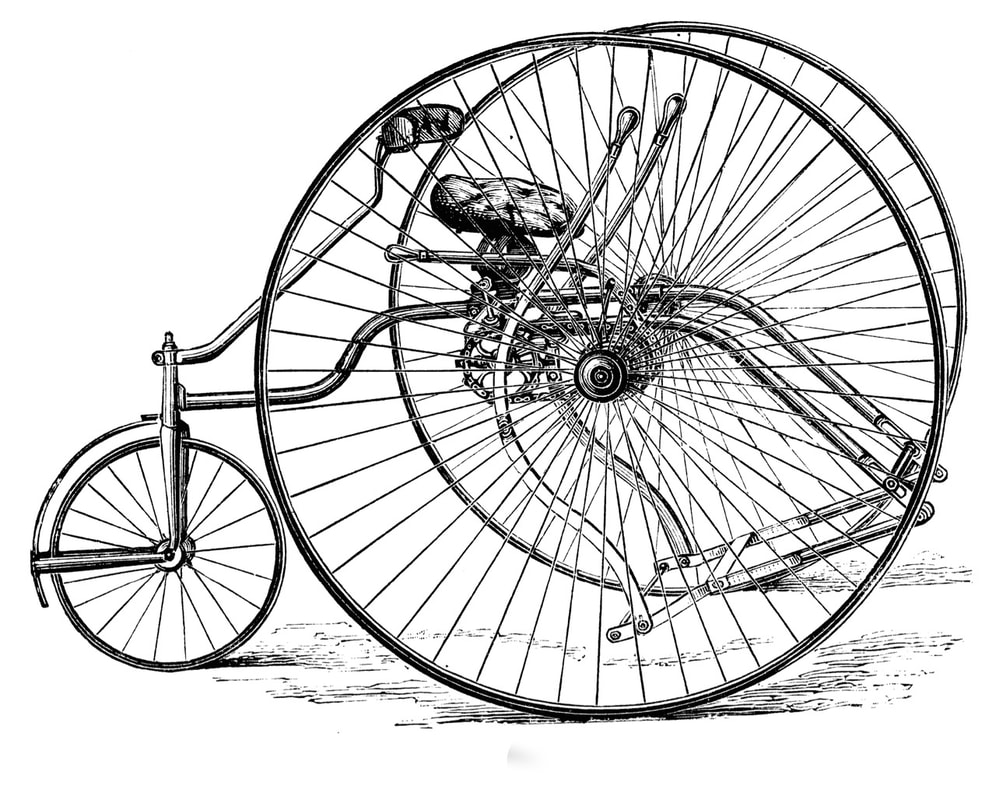
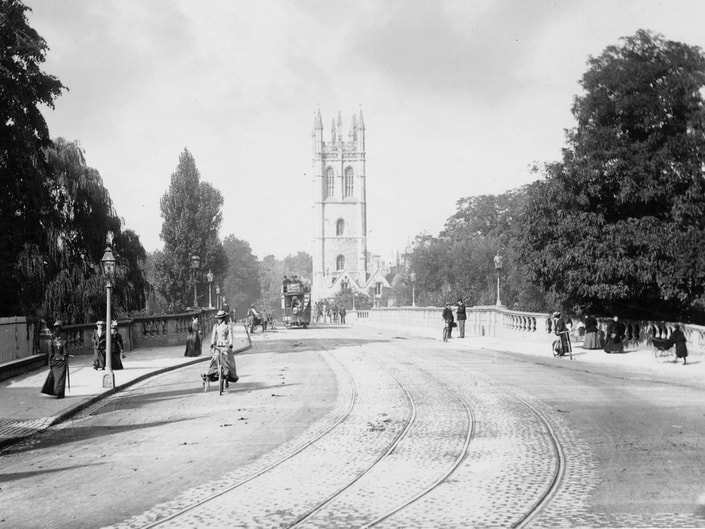
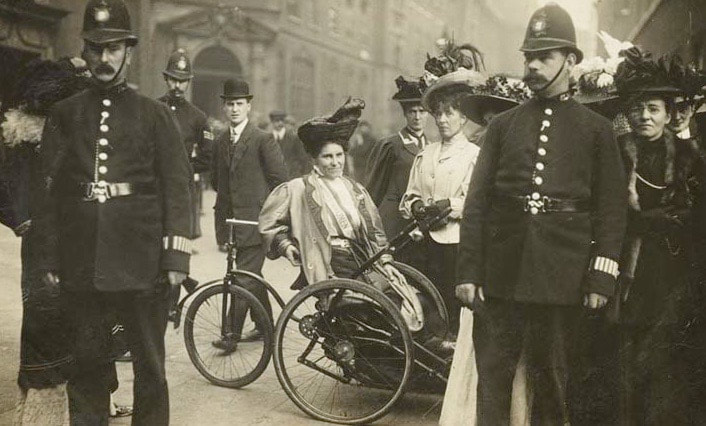
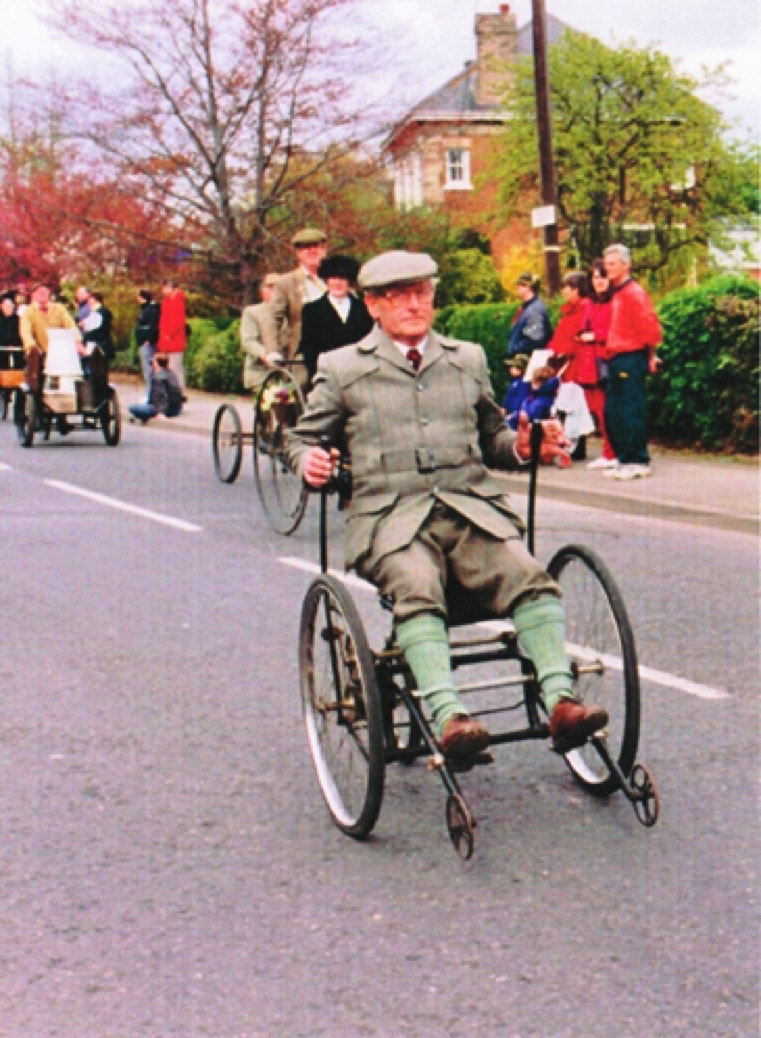
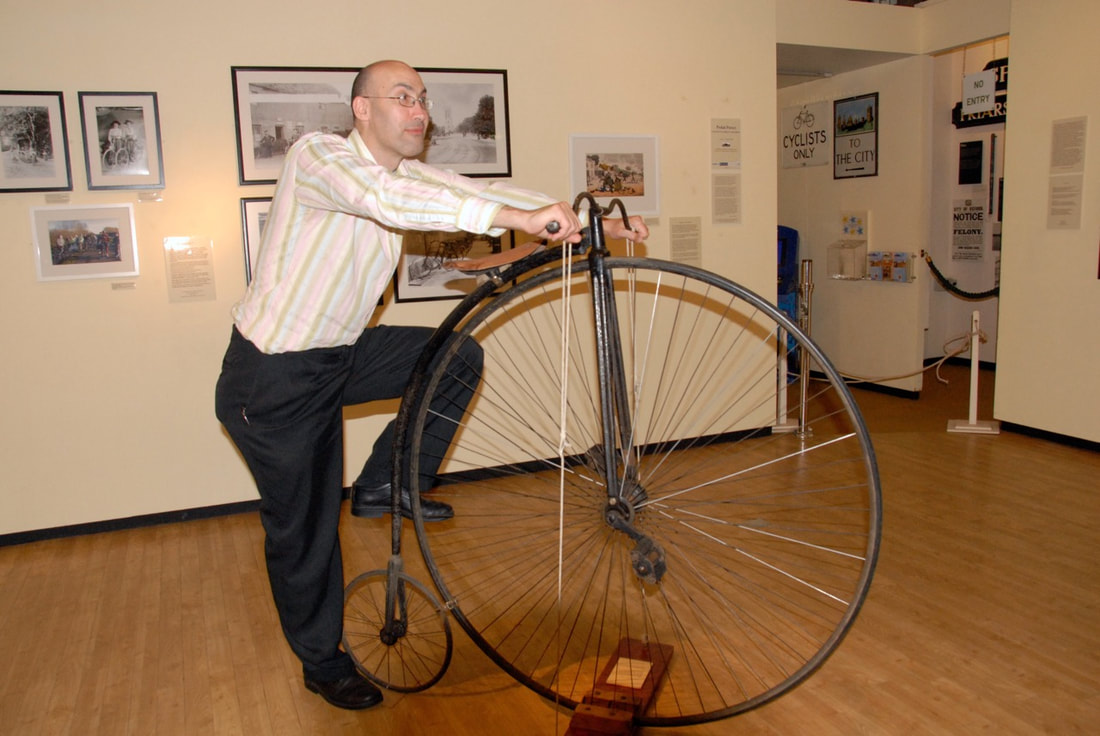
 RSS Feed
RSS Feed
